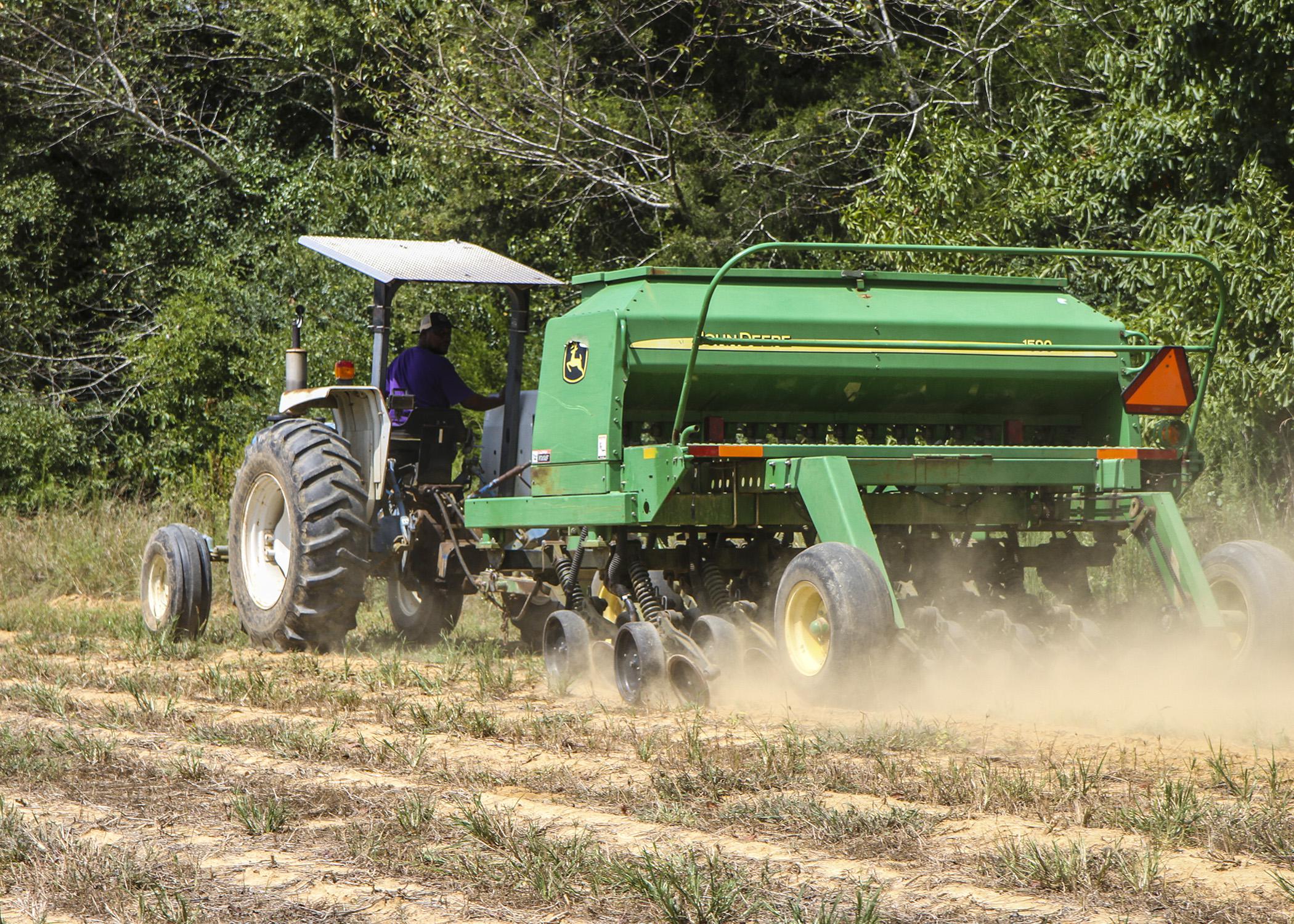Information Possibly Outdated
The information presented on this page was originally released on September 19, 2014. It may not be outdated, but please search our site for more current information. If you plan to quote or reference this information in a publication, please check with the Extension specialist or author before proceeding.
Sow winter cover crops and reap improved soil
MISSISSIPPI STATE -- Whether you are a small-scale gardener, a large agricultural producer or somewhere in between, you probably know that soil health is just as important to your success as water and sunshine.
Recently, there has been a renewed emphasis on sustainable soil management. One practice advocated for sustainable soil management is the use of cover crops. Cover crops are plants sown between growing seasons. In some areas of Mississippi, cost-share programs are available for cover crops under the U.S. Department of Agriculture Natural Resources Conservation Service’s practice code 340.
All cover crops reduce soil erosion and increase soil organic matter content, but some cover crops have other benefits as well. The choice of a cover crop is typically dependent on the needs of the upcoming crop. In most instances, planting a mix of cover crops is the best way to produce multiple soil benefits.
Clovers, for example, help to increase stores of nitrogen in the soil. This may reduce the amount of nitrogen fertilizer needed in the upcoming season and consequently reduce associated water quality degradation from fertilizer runoff.
Plants such as radishes reduce soil compaction and increase water infiltration in the soil profile, resulting in better long-term soil moisture. Several varieties of cereal crops and other grasses can be particularly useful for weed suppression by out-competing weeds for sunlight and water. They may also exhibit allelopathy, a phenomenon in which the plant releases a chemical substance that inhibits growth of neighboring plants.
There are four steps to getting the most out of a cover crop.
The first step is selection. Identify your goals for the upcoming season and choose the appropriate cover crop or mix of cover crops. Some reliable choices for the Southeast include crimson/berseem clover, cereal rye, buckwheat, soybean and oats.
The second step is planting. Once you identify your crops, prepare your seedbed and plant your crops. Depending on the crop, this can be as simple as raking the soil, scattering your seed and re-raking the soil.
The optimal time to plant many cover crops is relative to the potential for frost. In Mississippi, the average first frost dates range from October 26 to November 5. You’ll want to sow your seeds about 30 days prior to the first anticipated fall frost date in your part of the state.
The third step is maintenance. In general, cover crops require minimal care. The most common need is mowing, and the timing is crop-dependent. In a particularly warm or dry period, cover crops may require supplemental watering.
The final step is termination. Part of choosing your cover crop includes the ease with which you can kill it to prepare for the upcoming planting season. The nitrogen and organic matter benefits of cover crops come from incorporating these plants into the soil at the end of their life cycle. The timing, effort and methods for termination are also crop-dependent.
If your tomatoes are spent and your eggplants aren’t looking so fresh anymore, consider putting in a cover crop for the fall. Many local independent businesses carry seed for cover crops, often available by the pound -- a plus for small gardens. Co-ops and garden centers can order seed as well.
So while you’re out picking up those maroon mums for your fall tailgates, grab a bag or two of Austrian winter pea; your squash will thank you.
For more information on choosing and planting cover crops in your gardens or fields this fall, call or visit your Mississippi State University Extension Service county office.

Editor’s Note: Extension Outdoors is a column authored by several different experts in the Mississippi State University Extension Service.





